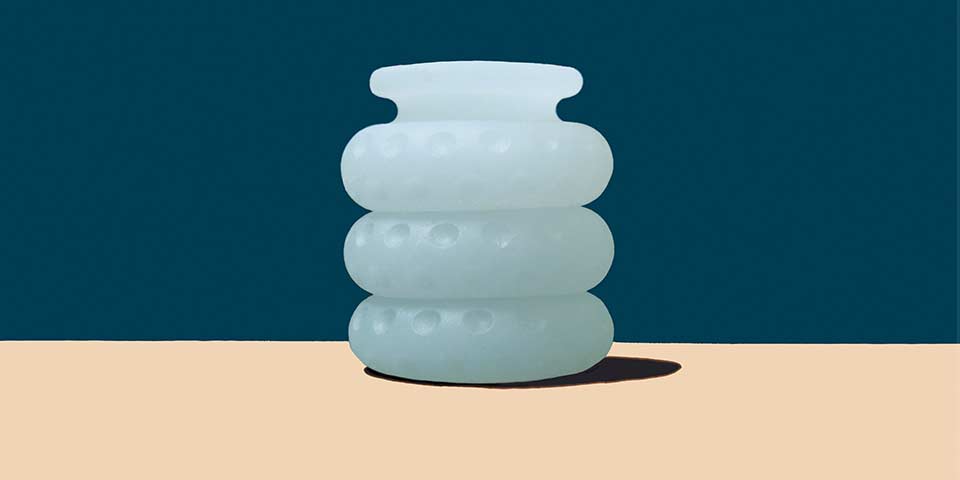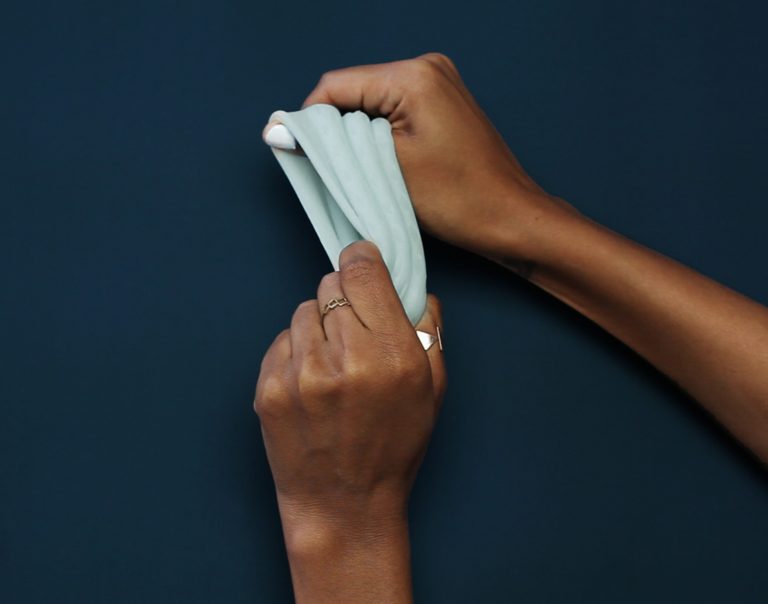- 75% of Women Have Experienced Painful Sex
“75% of women have experienced painful sex.”
Love hurts, the saying goes. But way too many people experience pain during sex. According to Emily Sauer, roughly three quarters or all women have suffered from dyspareunia – i.e. painful sex – at some point or other. Emily is part of that group herself, and so she decided to do something about it. Her solution is named Ohnut, and it has recently become a reality thanks to a successful crowdfunding campaign. In our interview, she tells us about the stigma that still surrounds dyspareunia and she explains how Ohnut can help.

In your Kickstarter campaign, you describe Ohnut as “an intimate wearable redefining painful sex“. How will Ohnut achieve this goal?
Emily Sauer:We surpassed our goal of $50,000 by $10,000 because we spoke to people across the world about a hugely underreported statistic: 75% of women have experienced painful sex. That’s most of us. Ohnut is redefining the way in ways in which we can normalise such a common condition.What can you tell us about the problem you set out to solve?
This problem is hugely personal to me, having had painful sex dismissed by doctors for over 10 years. At the same time, I’ve always been a conversation starter and this was the one conversation I wasn’t having. So I dealt quietly. It’s both surprising and unsurprising that many women will have painful sex in their lifetime, but it is the collective silence around it that perpetuates the associated shame, self-critique, and feeling of being unrelatable. I thought no one else knew what I was going through for 10 years, and the second Ohnut became a vehicle for communication I couldn’t believe how alone I wasn’t.How common is pain during sex and what causes it?
Pain during sex will be experienced by 75% of all women, and yet most often, causes are compounding due to a combinations physiological / mechanical causes and residual stressors. Deep dyspareunia, which is the type of pain Ohnut addresses, can occur because of conditions such as endometriosis, polycystic ovarian syndrome, cancer treatment, having a baby, trauma, etc.
How did you come up with the idea of developing such a product?
At 33 years old, if you’d asked me what is one secret I never discussed with anyone, it would have been that sometimes intercourse was painful for me. Once I came up with the original product idea to be able to control penetration depth, I hacked together a prototype at home and realised quickly that it worked! From there I mustered the courage to start talking about this shared experience and the fact that there was a potential interim solution option. To my surprise friends, strangers, even family members came out and told me they had this experience too. From there the conversation snowballed. Doctors started calling, emails from strangers started coming in. People were ready to take action immediately.Did you have previous experiences in this field?
When I started this journey, I called upon a community I didn’t know. Now Ohnut is backed by renowned surgeons, pelvic floor physical therapists, and sexual health educators all over the US. We’re also guided by a medical and scientific advisory board, and in the midst of our first clinical study.It’s a long way from an idea to a finished product. What did the concrete development look like?
A lot of messy silicone in my kitchen! I developed Ohnut with some of the smartest engineering and medical minds, testing out different designs with groups of beta testers who have varying pelvic pain. Each iteration of the product was fine-tuned until we came up with the current modular, ergonomic, fit. We’ve had overwhelmingly positive results.Can you tell us more about the design of Ohnut? Why did you choose the material and shape we see in the final product?
Ohnut was designed with all bodies in mind and can stretch width-wise to accommodate most men / objects of choice, and length-wise for a range of female bodied individuals. Male testers have enjoyed that it “feels like a hug.” The material is a body-safe polymer blend, so as to be compatible with silicone lubrication.How exactly is the product used in practice?
Ohnut is worn at the base of the penis or other object. Using patent-pending compression technology and our unique linking system, Ohnut is friendly, lightweight and ergonomically accommodating. It’s comprised of one to four rings, each of which you can remove or add to your liking. We always suggest starting with all four rings, and work down if preferred.
Since painful intercourse is such a common problem, why wasn’t it tackled before?
Problems that are stigmatised have a hard time coming to light. Look at erectile dysfunction: it effects countless men around the world, yet until people still are willing to talk about it despite the fact that it has received much greater institutional financing and social acceptance.The societal silence around painful intercourse and pelvic health is part of a larger systemic problem where our medical institutions, education systems, and insurance policies generally don’t support female sexual dysfunction. Delays in diagnoses (which generally range from 6 to 10 years) have been shown to be greater for women reporting pelvic pain compared to those reporting infertility, suggesting that there is greater laxity surrounding pelvic pain symptoms versus procreation. Gynaecologists aren’t trained to make the necessary diagnoses around pelvic pain (which to be somewhat fair, are hard to make because often times causes of dyspareunia are compounding). But more discouraging is the fact that only 40% of gynaecologists routinely ask if patients even have sexual problems. And yet, even in the case that sexual problems are discussed, solutions options are often invasive, prohibitively expensive, or non-existent. Sigh.
With Ohnut, we’ve worked tirelessly with researchers in sexual medicine and pelvic health specialists to provide a product that’s ergonomically sound, fool-proof to use, and also fun to play with.
Everybody has a different size and shape. Is Ohnut a one-size-fits-all product or will there be different versions?
Ohnut was designed with all bodies in mind and can stretch width-wise to accommodate most men / objects of choice, and length-wise for a range of female bodied individuals. We will, of course, continue to iterate on the wearable, but for now it comes with four stacking rings in our current classic design.——From EAN Industry Insights





